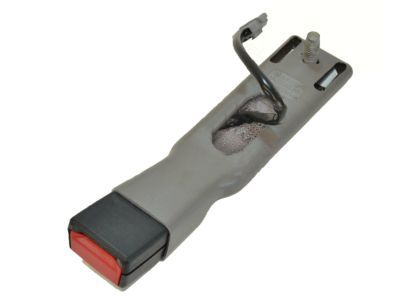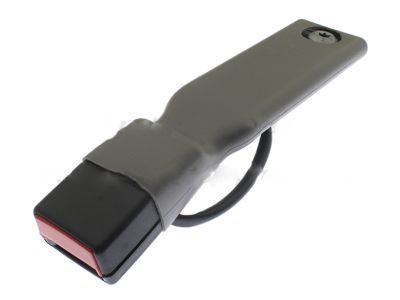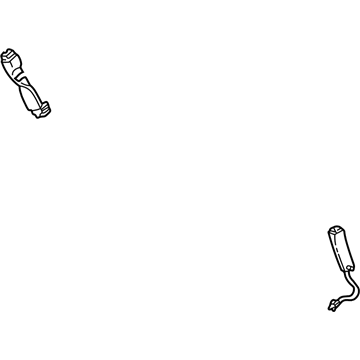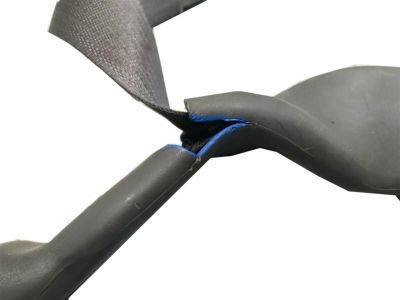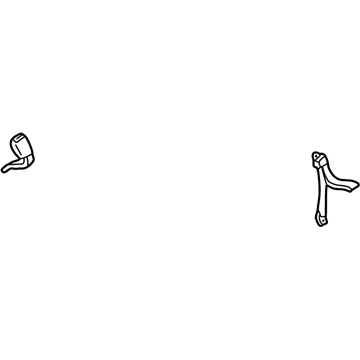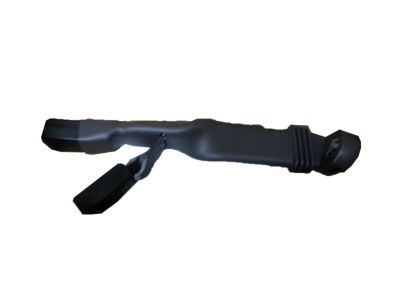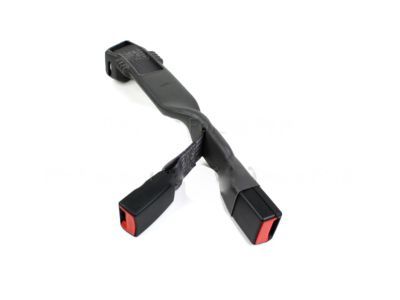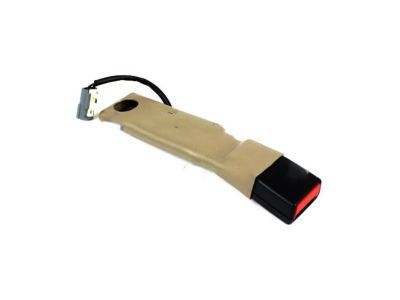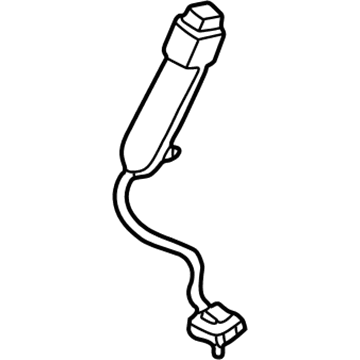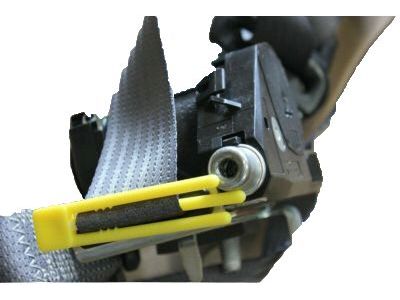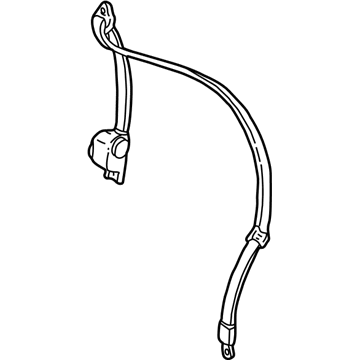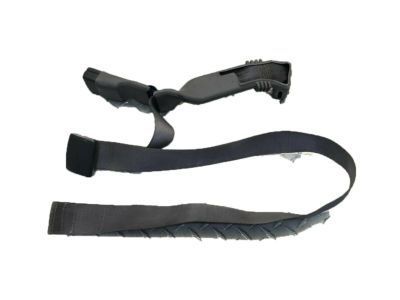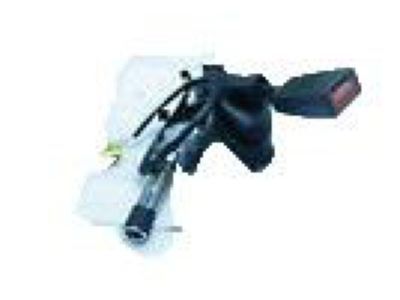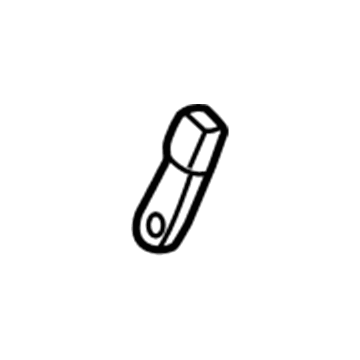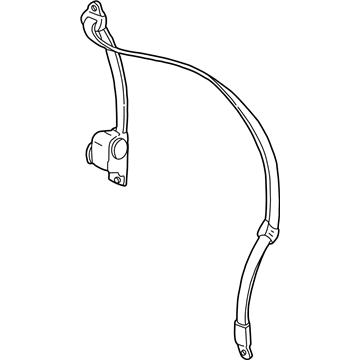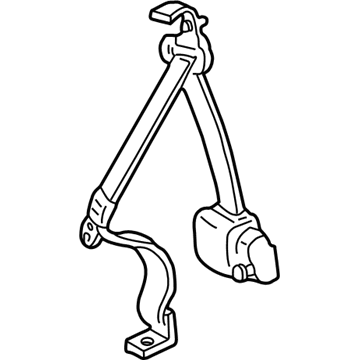FordParts
My Garage
My Account
Cart
OEM 2004 Ford F-150 Heritage Seat Belt
Seat Safety Belt- Select Vehicle by Model
- Select Vehicle by VIN
Select Vehicle by Model
orMake
Model
Year
Select Vehicle by VIN
For the most accurate results, select vehicle by your VIN (Vehicle Identification Number).
16 Seat Belts found

2004 Ford F-150 Heritage Retractor Assembly Buckle, Front Driver Side Part Number: 1L3Z-1561203-AAB
$112.34 MSRP: $163.52You Save: $51.18 (32%)Ships in 1-3 Business DaysProduct Specifications- Other Name: Seat Belt Assembly; Seat Belt Receptacle, Front Left; Buckle
- Position: Front Driver Side
- Replaces: 1L3Z-1561203-AAA, 1L3Z-1561203-AAC
- Base No.: 61203
- Item Weight: 0.70 Pounds
- Item Dimensions: 3.0 x 2.4 x 11.3 inches
- Condition: New
- Fitment Type: Direct Replacement
- SKU: 1L3Z-1561203-AAB
- Warranty: This genuine part is guaranteed by Ford's factory warranty.

2004 Ford F-150 Heritage Center Seat Belt, Front Part Number: 1L3Z-15612B19-AAE
$158.64 MSRP: $230.92You Save: $72.28 (32%)Ships in 1-2 Business DaysProduct Specifications- Other Name: Belt And Buckle Assembly; Seat Belt, Front Center Left; Latch
- Position: Front Center
- Replaces: 1L3Z-15612B19-AAF, 1L3Z-15612B19-AAD
- Base No.: 612B19
- Item Weight: 3.20 Pounds
- Item Dimensions: 23.3 x 6.3 x 5.3 inches
- Condition: New
- Fitment Type: Direct Replacement
- SKU: 1L3Z-15612B19-AAE
- Warranty: This genuine part is guaranteed by Ford's factory warranty.

2004 Ford F-150 Heritage Center Seat Belt, Front Passenger Side Part Number: 1L3Z-15612B18-AAC
$118.71 MSRP: $172.80You Save: $54.09 (32%)Product Specifications- Other Name: Belt And Buckle Assembly; Seat Belt, Front Center Right
- Position: Front Center Passenger Side
- Base No.: 612B18
- Item Weight: 2.00 Pounds
- Item Dimensions: 4.9 x 5.9 x 18.1 inches
- Condition: New
- Fitment Type: Direct Replacement
- SKU: 1L3Z-15612B18-AAC
- Warranty: This genuine part is guaranteed by Ford's factory warranty.
 Product Specifications
Product Specifications- Other Name: Seat Belt Assembly; Seat Belt Receptacle, Front Left
- Position: Front Driver Side
- Base No.: 61203
- Item Weight: 1.20 Pounds
- Item Dimensions: 12.5 x 5.2 x 3.7 inches
- Condition: New
- Fitment Type: Direct Replacement
- SKU: 1L3Z-1561203-BAA
- Warranty: This genuine part is guaranteed by Ford's factory warranty.
 Product Specifications
Product Specifications- Other Name: Seat Belt Assembly; Seat Belt Lap and Shoulder Belt, Front Left
- Position: Front Driver Side
- Base No.: 611B09
- Item Weight: 3.60 Pounds
- Condition: New
- Fitment Type: Direct Replacement
- SKU: 2L3Z-15611B09-AAC
- Warranty: This genuine part is guaranteed by Ford's factory warranty.
 Product Specifications
Product Specifications- Other Name: Seat Belt Assembly; Seat Belt, Front Center Left; Center Seat Belt
- Position: Front Center Driver Side
- Replaces: 1L3Z-15612B19-AAA, 1L3Z-15612B19-AAC
- Base No.: 612B19
- Item Weight: 0.60 Pounds
- Item Dimensions: 7.8 x 3.0 x 3.0 inches
- Condition: New
- Fitment Type: Direct Replacement
- SKU: 1L3Z-15612B19-AAB
- Warranty: This genuine part is guaranteed by Ford's factory warranty.
 Product Specifications
Product Specifications- Other Name: Seat Belt Assembly; Seat Belt Receptacle, Front Right
- Position: Front Passenger Side
- Replaces: 1L3Z-1561202-AAE, 1L3Z-1561202-AAC, 1L3Z-1561202-AAA
- Base No.: 61202
- Item Weight: 0.80 Pounds
- Condition: New
- Fitment Type: Direct Replacement
- SKU: 1L3Z-1561202-AAD
- Warranty: This genuine part is guaranteed by Ford's factory warranty.
- Product Specifications
- Other Name: Belt And Buckle Assembly; Seat Belt Receptacle, Rear Right
- Position: Rear Passenger Side
- Replaces: YL3Z-1860044-AAA, YL3Z-1860044-BBB, YL3Z-1860044-DDD
- Base No.: 60044
- Item Weight: 1.60 Pounds
- Condition: New
- Fitment Type: Direct Replacement
- SKU: YL3Z-1860044-CCC
- Warranty: This genuine part is guaranteed by Ford's factory warranty.
- Product Specifications
- Other Name: Seat Belt Assembly; Seat Belt Receptacle, Front Left
- Position: Front Driver Side
- Base No.: 61203
- Item Weight: 1.00 Pounds
- Item Dimensions: 3.9 x 4.6 x 12.2 inches
- Condition: New
- Fitment Type: Direct Replacement
- SKU: 1L3Z-1561203-BAB
- Warranty: This genuine part is guaranteed by Ford's factory warranty.
- Product Specifications
- Other Name: Seat Belt Assembly; Seat Belt Receptacle, Rear Left
- Position: Rear Driver Side
- Base No.: 60045
- Item Weight: 1.60 Pounds
- Condition: New
- Fitment Type: Direct Replacement
- SKU: YL3Z-1860045-AAB
- Warranty: This genuine part is guaranteed by Ford's factory warranty.
- Product Specifications
- Other Name: Seat Belt Assembly; Seat Belt Lap and Shoulder Belt, Front Left
- Position: Front Driver Side
- Replaces: 2L3Z-18611B09-AAA, 2L3Z-18611B09-AAB, 2L3Z-18611B09-AAF, 3L3Z-18611B09-AAA, 3L3Z-18611B09-AAB, 2L3Z-18611B09-AAD
- Base No.: 611B09
- Item Weight: 8.70 Pounds
- Condition: New
- Fitment Type: Direct Replacement
- SKU: 3L3Z-18611B09-AAC
- Warranty: This genuine part is guaranteed by Ford's factory warranty.
- Product Specifications
- Other Name: Seat Belt Assembly; Seat Belt Lap and Shoulder Belt, Front Right
- Position: Front Passenger Side
- Replaces: 2L3Z-18611B08-AAF, 3L3Z-18611B08-AAA, 3L3Z-18611B08-AAB, 2L3Z-18611B08-AAD
- Base No.: 611B08
- Item Weight: 12.00 Pounds
- Item Dimensions: 22.1 x 14.1 x 9.1 inches
- Condition: New
- Fitment Type: Direct Replacement
- SKU: 3L3Z-18611B08-AAC
- Warranty: This genuine part is guaranteed by Ford's factory warranty.
- Product Specifications
- Other Name: Seat Belt Assembly; Seat Belt Lap and Shoulder Belt, Rear; Retractor Assembly
- Position: Rear
- Base No.: 611B68
- Item Weight: 3.00 Pounds
- Condition: New
- Fitment Type: Direct Replacement
- SKU: 2L3Z-18611B68-AAF
- Warranty: This genuine part is guaranteed by Ford's factory warranty.
- Product Specifications
- Other Name: Seat Belt Assembly; Seat Belt Lap and Shoulder Belt, Front Left
- Position: Front Driver Side
- Base No.: 611B09
- Item Weight: 3.80 Pounds
- Condition: New
- Fitment Type: Direct Replacement
- SKU: 2L3Z-15611B09-AAA
- Warranty: This genuine part is guaranteed by Ford's factory warranty.
- Product Specifications
- Other Name: Seat Belt Assembly; Seat Belt Lap and Shoulder Belt, Front Right
- Position: Front Passenger Side
- Replaces: 2L3Z-15611B08-AAB
- Base No.: 611B08
- Item Weight: 3.50 Pounds
- Condition: New
- Fitment Type: Direct Replacement
- SKU: 2L3Z-15611B08-AAC
- Warranty: This genuine part is guaranteed by Ford's factory warranty.
- Product Specifications
- Other Name: Seat Belt Assembly; Seat Belt Lap and Shoulder Belt, Front Right
- Position: Front Passenger Side
- Base No.: 611B08
- Item Weight: 3.40 Pounds
- Condition: New
- Fitment Type: Direct Replacement
- SKU: 2L3Z-15611B08-AAA
- Warranty: This genuine part is guaranteed by Ford's factory warranty.
2004 Ford F-150 Heritage Seat Belt
If you're seeking quality and affordability, look no further than our extensive inventory of genuine 2004 Ford F-150 Heritage Seat Belt available at FordPartsDeal.com. You can confidently purchase our OEM 2004 Ford F-150 Heritage Seat Belt as they are supported by the manufacturer's warranty and our hassle-free return policy, alongside the benefit of our fast delivery service.
2004 Ford F-150 Heritage Seat Belt Parts Q&A
- Q: How to Service the Seat Belt with a Rotated Tongue on 2004 Ford F-150 Heritage?A: A seat belt with a rotated tongue can be repaired by folding the seat belt in the image below. The second step is to remove the seat belt tongue on top of the fold.
